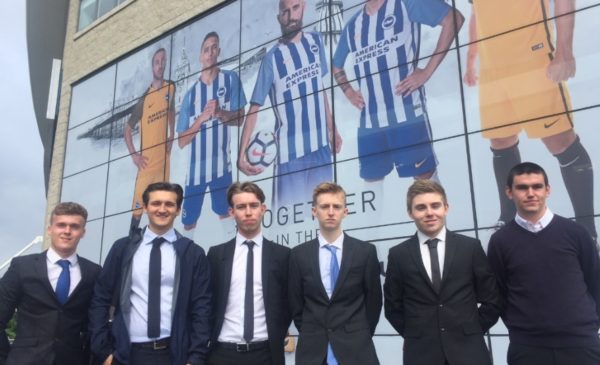Words by Tony Robertson (@TonyRob84)
Welcome to the third edition of Overtime Online’s weekly Formula 1 column.
This week, as promised in last weeks column, I will be reviewing the second half of Netflix’s Formula 1 Drive To Survive season two.
But before we get into the review lets take a look at what else has happened in the world of Formula 1.
Fighting Back:
On Monday March 30th, Mercedes announced they would be rolling out a breathing aid to help the NHS combat the Coronavirus pandemic. Announced shortly after ‘Project Pitlane’, Mercedes engineers working alongside engineers and clinicians at UCL have had a device called the CPAP (Continuous Positive Airway Pressure) approved for use by the NHS.
The aim is to mass-produce the device, already used in Italian and Chinese hospitals, to enable it to be used in a widespread manner in UK during the COVID-19 crisis.
The other six UK based F1 teams part of ‘Project Pitlane’: Red Bull, Racing Point, McLaren, Haas, Renault and Williams are also said to be working to aid the UK’s efforts to tackle Coronavirus.
A breathing aid that can help keep #COVID19 patients out of intensive care, adapted by mechanical engineers at @UCL and clinicians at @UCLH working with Mercedes-AMG High Performance Powertrains, has been approved for use in the @NHSuk 👇
— Mercedes-AMG F1 (@MercedesAMGF1) March 30, 2020
The Return of a Legend:
Aston Martin, creator of one the most iconic cars in film history and one of the most infamous car brands in the world, has announced its return to F1.
Aston Martin will be returning to F1 in 2021 as a full works team, taking over the spot of Racing Point.
In the announcement, Racing Point said that shareholders of Aston Martin had accepted a £536m fundraising underpinned by a £260m investment from a group of investors led by Lawrence Stroll. The agreement will see Mr Stroll become the executive chairman of Aston Martin.
So in 2021, we could see a return of Aston Martin racing green coloured livery.
We have news 👀https://t.co/xhmlmMtJf5
— BWT Racing Point F1 Team (@RacingPointF1) April 1, 2020
Formula 1 Drive To Survive Second Half:
They don’t do halves.
Netflix start of the second half of the season by focusing on the swap between Pierre Gasly and Alex Albon in the episode Raging Bulls .
One of the best aspects about the series is the ability to learn about what makes an F1 driver tick both on and off the track. As such it provides a really good insight to each of the drivers.
But while the highs of F1 are Everest sized, the lows bring unimaginable pain. This episode also highlighted the high stakes F1 drivers deal with every time they take to the race track.
The death of Formula 2 driver Anthoine Hubert during the Belgian feature race shocked the racing world and served as a cold reminder to what is at stake.
Embed from Getty ImagesEpisode six is easily the most powerful episode of both series. More than anything, it highlights how far the safety procedures of Formula racing cars have improved over the years.
Episode seven, Seeing Red, switches the focus of the last two episodes over to the final title challenger, Ferrari.
Ferrari are a team covered in glory and have had some of the greats drive for them in the past including Michael Schumacher and Gilles Villeneuve. Even in the 2019 racing season they boasted a very strong line up in four time world champion Sebastien Vettel and prodigy Charles Leclerc.
A common theme throughout each and every episode has been the rivalries between the drivers in the teams. However, while most seem to give off an air of toxicity or pressure whereby one driver is so far clear of the other, the rivalry at Ferrari is depicted as a positive rivalry. Although it does lean towards Leclerc being the better driver rather than set out a balanced experience on track in 2019.
Episode eight, Musical Chairs, follows this theme by focusing on the relationship between the drivers at Renault, Daniel Ricciardo and Nico Hulkenberg.
Like the relationship at Ferrari, it is generally perceived to be positive. But this time there is an explicit focus on the pressure of drivers to keep their seat.
The focus on Nico Hulkenberg ironically mirrored last seasons episode on Esteban Ocon at Racing Point, then named Force India, where he also faced immense pressure to retain his seat. Ocon ultimately did replace Hulkenberg for the 2020 season. You can see the reminder of the driver line ups for 2020 here.
During the coverage of the German Grand Prix you cannot help but feel heartbroken for Hulkenberg especially after the entire episode has emphasised the fact that he had never been on an F1 podium before.
While again the episode was very well made, the editorial decision to make the pauses after a conversation seemed quite forced at times.
The penultimate episode, named Blood, Sweat and Tears, focuses on the team at the back of the grid, Williams.
Despite new drivers at the helm in 2019 the team continued to struggle on the track, ultimately only amassing a single point throughout the season.
This episode provides a proper insight into the pressure on those behind the scenes, from the team principal to the chief technical director and engineers.
That being said, it gives up a bit of what makes the series so great: the races. While it is a nice change of pace, and such episodes are needed to give viewers a more rounded understanding of the pressures associated with F1, the episode lacks the impact of the other nine episodes.
The final episode of the season has a multi-faceted focus on Albon, Gasly and Carlos Sainz Jr. at the Brazilian Grand Prix, which was easily the craziest race of the year.
Embed from Getty ImagesEach of the three drivers were gunning for the first podium of their careers, and coming into a restart following a collision between the two Ferrari drivers, Albon was in second, Gasly third and Sainz ,who had started at the back of the grid, in fifth with Lewis Hamilton in fourth.
Hamilton took Gasly straight away but then collided with Albon and dashed the Thai internationals hopes for a first career podium as he returned to the track at back of the grid.
Gasly regained second spot and he managed to hold on after some tight wheel to wheel racing with Hamilton down the final straight all the way to the line. After the lows of the series for Gasly it was heart-warming to see the celebrations for his P2 finish at the end.
Celebrations were also in order for Sainz after he was promoted to P3 following a penalty which was awarded to Hamilton for his collision on Albon.
The episode ends with a preview into the 2020 season. Concluding on one of the most dramatic F1 races of recent times.
Of course the series was released before the postponement of the season was announced due to the Coronavirus pandemic so the seasons regulations will not be changing until 2021 but the driver situation remains the same with all but four being out of contract.
Next week, I will be reviewing the movie Rush, as well as looking at what has happened in the second race in the Virtual Grand Prix series.








